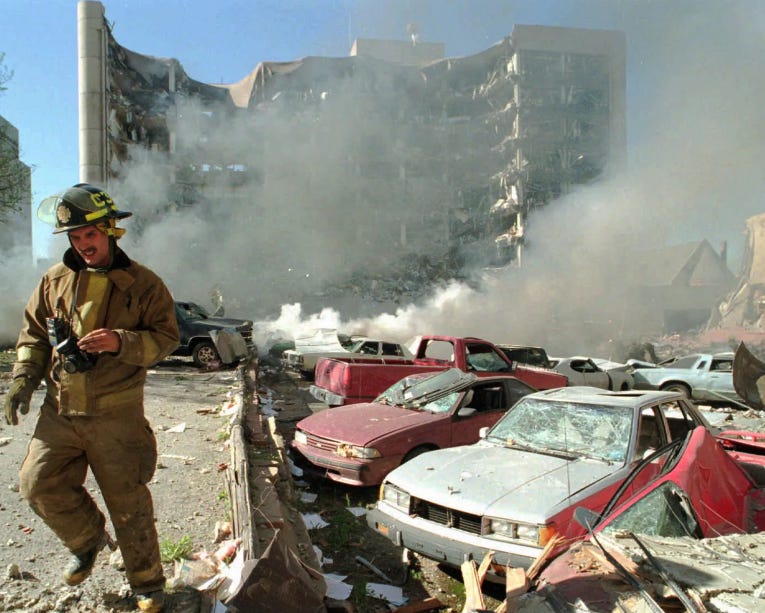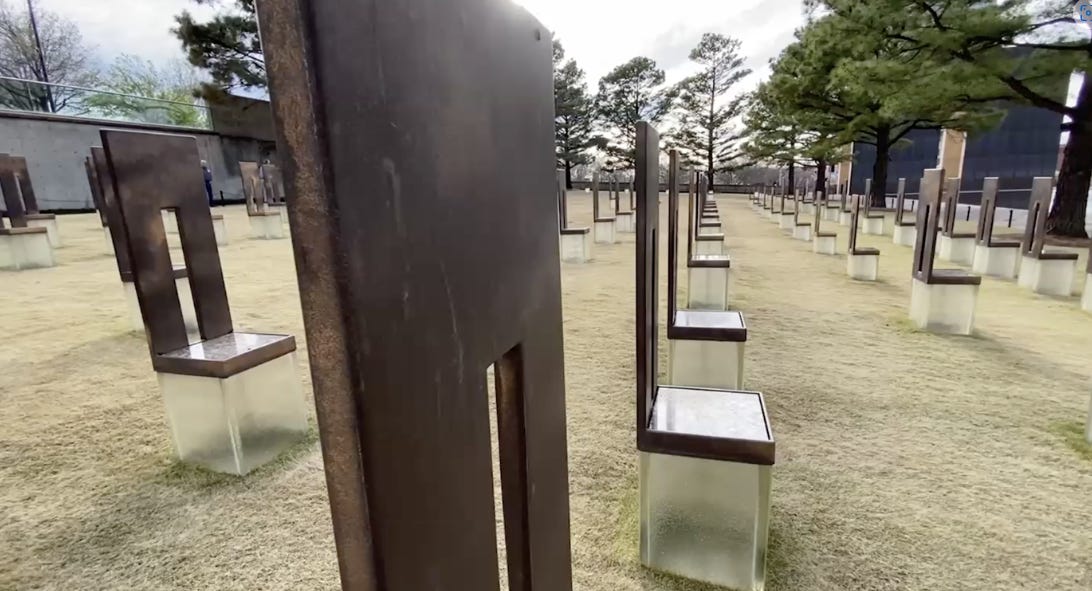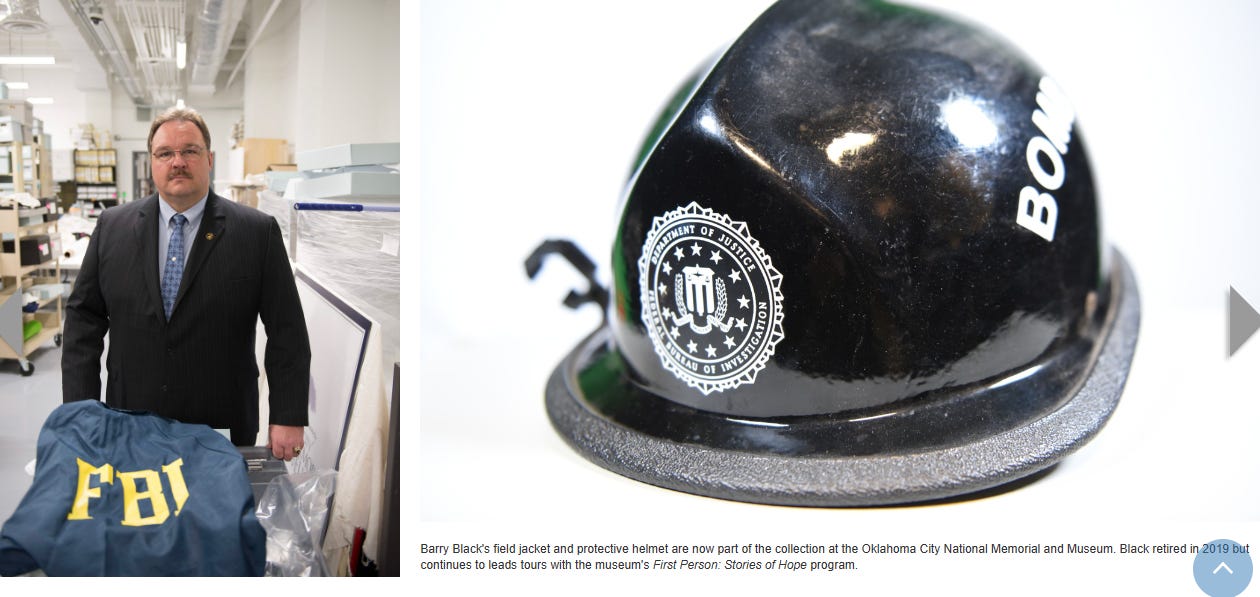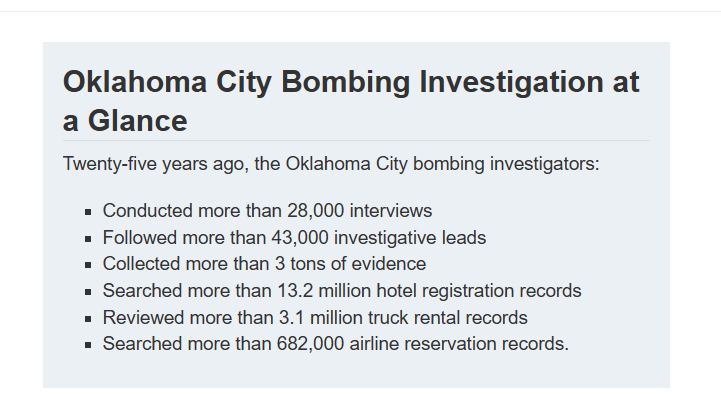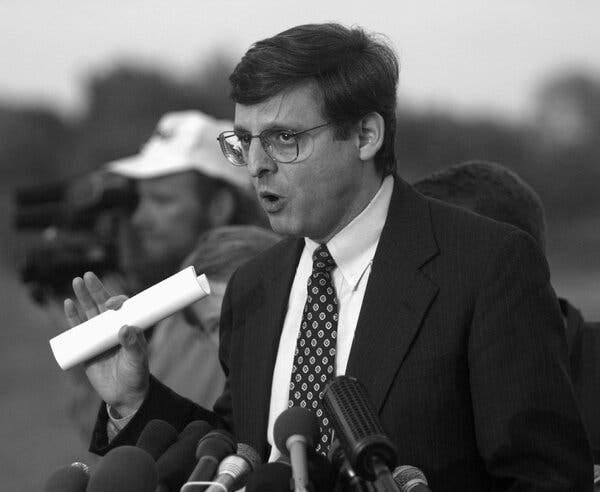Oklahoma City Bombing 28 years ago: Timothy James McVeigh and Attorney General Merrick Brian Garland
Too young, too rebellious. I was tempted by the “Terrorist Option”, a green shirt with glasses, in the game “Counter Strike (CS)”, (was) peak popularity across the world in 2001-2004. Never forget the options on the Counter Terrorist side: DEVGRU France, SAS UK, GSG9 Germany, and DELTA USA. I nearly selected for national competition (Indonesia level) for CS.
I lived (when I was young) with Counter Strike. And I use codename “Timothy McVeigh” every time I play CS (Counter Strike).
The Dancing Itos were a lesser pop culture legacy of the O.J. Simpson case. Jay Leno’s “Tonight Show” featured a ragged chorus line of black-robed hoofers meant to resemble Judge Lance Ito, who was presiding over the trial, as well as a look-alike for Marcia Clark, the lead prosecutor. It was a (sort of) funny sendup of the way those connected to the double murder trial had suddenly become famous. The skit lasted less than a couple of minutes, and it’s been largely forgotten — except by the attorney general of the United States, Merrick Brian Garland.
The bombing took place on April 19, 1995, at a time when the former football star’s criminal trial, which had begun that January, was a national obsession. This undignified spectacle served as a photo negative of how Mr. Garland wanted the bombing case to unfold, and decades later he was still repelled. OK Bombing then reduplicate in The X-Files Movie with different issue (camouflage for buried alien).
Early morning of April 19, 1995, FBI Special Agent Barry Black was tracking a white-collar fugitive a few miles from downtown Oklahoma City when he heard a loud blast in the distance.
Soon after, Black was pulled from his fugitive case to begin working the massive investigation of the deadly bombing that took the lives of 168 people, including 19 children, at the Alfred P. Murrah Federal Building.
The efforts of Black and scores of federal, state, and local investigators led to the convictions of Timothy McVeigh and his co-conspirators, Terry Nichols and Michael Fortier, in one of the worst homegrown terrorism cases in the nation’s history.
“It was a group effort. I was there doing my part just like everyone else,” said Black, who recently retired from the FBI.
The event shaped the FBI’s approach to investigating terrorism.
The Oklahoma City bombing introduced a frightening new concept for the United States: homegrown terrorism. Until the 1993 World Trade Center bombing, the country hadn’t witnessed an event of this magnitude, let alone one carried out by American citizens.
After the bombing, the FBI began shifting its priorities. The number of Joint Terrorism Task Forces nationwide expanded, as did the training programs at the Hazardous Devices School, to increase partnerships between the FBI and other federal, state, and local law enforcement agencies.
Not only did the FBI start providing law enforcement bomb techs with clearances to share equipment and information with them, we also focused on ramping up our investigative technology and getting more specialized equipment for the field.
“We've taken the lessons learned from these unfortunate events to ensure that our response is more rapid in the field,” Black said.
“The Dancing Itos,” he told. “That was exactly what we wanted to avoid.”
At the time of the bombing, Mr. Garland was 42 years old, and his official title was principal associate deputy attorney general (pronounced p-dag, in Justice Department argot), which hardly did justice to his importance in the department. About two days after the bombing, Janet Reno, the attorney general, grew concerned that turf battles were hampering the investigation, so she told Jamie Shona Gorelick, the deputy attorney general, to get someone on the ground in Oklahoma City to take charge. Ms. Gorelick sent Mr. Garland, whose experience on the case would shape the rest of his career, including his most important current duty — directing the investigation of Donald Trump.
Mr. Garland appears to see the courtroom — and the law — as an almost sacred refuge from the tumult of modern life. The law, he believes, must be protected from not just the vulgarities of show business but also the passions of politics. This is why he has proceeded with such caution in the Trump investigation and especially why he has said so little about it in public.
There is much to be commended in this kind of reticence, because it projects fairness and even-handedness. But there is a cost, too, in Mr. Garland ’s approach. As attorney general, Mr. Garland is responsible not just for bringing cases but also for warning the public of ongoing threats, including from political actors like Mr. Trump and his allies. The question is whether Mr. Garland ’s silence protects the law but also misses the chance to defend democracy.
On his first day in Oklahoma City, Mr. Garland represented the government at Timothy McVeigh’s arraignment. “I sat across the table from killers,” Mr. Garland told me, recalling his years as an assistant U.S. attorney. “But I had never seen such a stone-cold face.”
Later that night, Mr. Garland visited the bombing site, the Alfred P. Murrah Federal Building, which was still illuminated by massive lights to aid in the search for survivors. When he arrived, there were tiny broken toys and ripped little backpacks visible in the debris. (The final death toll would be 168, including 15 of the 21 children in the day care center on the second floor.) Mr. Garland and his wife had two daughters who were close in age to the kids who had perished.
Mr. Garland took control of the legal side of the case the next morning. The Simpson case was fresh in his mind. In that unfolding drama, the defense had pointed to a series of blunders by the Los Angeles police and prosecutors. The issue of law enforcement incompetence and misconduct was much in the air, and Mr. Garland knew that the public — and prospective jurors — would be watching the bombing case through that filter. He didn’t want agents to take any chances that a judge might later find their searches unlawful and suppress the evidence they discovered. So he set up shop processing search warrants for nearly every step the agents took in the investigation. It was tedious and perhaps unnecessary, but Mr. Garland made sure that the proprieties were observed.
The pattern was set for the rest of the investigation — and the rest of Mr. Garland’s career: painstaking work behind the scenes and extreme rhetorical restraint in public. A few days after he arrived in Oklahoma, Mr. Garland served as prosecutor in Mr. McVeigh’s bail hearing. In light of the seriousness of the charges, there was no chance Mr. McVeigh was going to be released, but Mr. Garland went out of his way to speak about the case in an almost willfully boring way. “You have heard evidence, your honor,” he said in court, “more than sufficient to establish that during and in relation to a crime of violence the defendant used and carried a destructive device — that is, a bomb.” On the issue of bail, he said: “Your honor, as everyone knows, he faces the possibility of the death penalty in this case and enormous incentive to flee. The government represents no condition would prevent a person in that situation from fleeing.”
Mr. Garland became so invested in the bombing case that he weighed asking Ms. Gorelick for the chance to remain as lead courtroom prosecutor. But his boss had other plans, because the Unabomber investigation was floundering. Starting in 1978, a series of bombs had been mailed to various university and airline targets around the country. From 1987 to 1993, the bombings ceased, but then they started up again, including one that killed a Sacramento man on April 24, 1995, five days after the Oklahoma City bombing. The Justice Department was embarrassed by its failure to catch the mysterious perpetrator, and Ms. Gorelick told Mr. Garland to take over, which he did. (Ted Kaczynski was arrested for the bombings in his tiny cabin in Montana on April 3, 1996.)
For the trials of Mr. McVeigh and Terry Nichols in the Oklahoma City bombing, Mr. Garland helped select a prosecution team led by Joseph Hartzler and Larry Mackey, who never became as famous as the O.J. prosecutors but who won convictions in court. (Mr. McVeigh was executed in 2001 —- June 11, 2001, 3 months before WTC); Mr. Nichols is serving life without parole.) Mr. Garland received a splendid consolation prize for losing out on the trials. In September 1995, President Bill Clinton nominated him to a seat on the United States Court of Appeals for the District of Columbia Circuit, the second most important court in the country, though he was not confirmed until March 1997. Mr. Garland’s tenure as a judge reinforced the tendencies he established in the bombing investigation: meticulous about assembling facts and reluctant about expressing views.
So it has gone in Mr. Garland’s turn as attorney general, especially when it comes to the Trump investigation. Since taking office, Mr. Garland has been criticized for the slow pace of the investigation and for his failure to prosecute those who inspired or incited the Capitol attack as he focuses instead on those who invaded the building. This criticism seems unfair, or at least premature. Mr. Garland has hardly backed away from the post-Jan. 6 investigation. He sanctioned the prosecution of the Proud Boys and the Oath Keepers on the rarely deployed charge of seditious conspiracy; approved the search of Mar-a-Lago, Mr. Trump’s home in Florida; and appointed Jack Smith, an aggressive prosecutor, to lead the investigations. A fair verdict on Mr. Garland should await the outcome of Mr. Smith’s work.
Yet it is fair to question why Mr. Garland continues to be a quiet, if not silent, public voice about the Trump investigation. “We follow the facts and the law wherever they lead,” he said at the Justice Department podium. “The best way to undermine an investigation is to say things out of court.” This is actually a debatable point. Government officials, especially high-level policymakers like the attorney general, are allowed to speak publicly about the meaning and importance of their work, including the continuing threat of homegrown violence. (In my interview with him, Mr. Garland not only refused to draw any comparisons between Mr. McVeigh and the Capitol rioters but also refused even to utter the words “January 6.”)
In the aftermath of the Oklahoma City bombing, President Clinton made a different choice and spoke clearly, as well as presciently, about the abiding danger. In a speech five days after the bombing, he said: “We hear so many loud and angry voices in America today whose sole goal seems to be to try to keep some people as paranoid as possible and the rest of us all torn up and upset with each other. They spread hate. They leave the impression that, by their very words, that violence is acceptable.”
Mr. Garland, in contrast, has largely left the stage to Mr. Trump himself. The former president has suggested that if re-elected he might pardon the hundreds of rioters that Mr. Garland’s department has prosecuted. Mr. Trump opened a recent rally with a song recorded by a group of men who were convicted for their roles on Jan. 6 as a celebratory video tribute to the insurrection played in the background. And Mr. Trump selected for its location Waco, Texas, the site of the government raid on April 19, 1993, that Mr. McVeigh chose to protest with the bombing two years later. Mr. Trump’s behavior must have looked like a provocation, if not a taunt, to Mr. Garland himself, who knows the significance of Waco better than almost anyone.
It may seem that Mr. Garland is simply taking the high road and letting his department do all its talking in the courtroom. That’s clearly the message he drew from his experience a quarter-century ago. But there’s another lesson to be drawn from the Oklahoma City bombing, about the malignant persistence of right-wing extremism in the United States.
The convictions of Mr. McVeigh and Mr. Nichols did nothing to stop their heirs. Public attention and vigilance are just as important. Mr. Garland, of all people, knows what happens when the threat is neglected or ignored.




